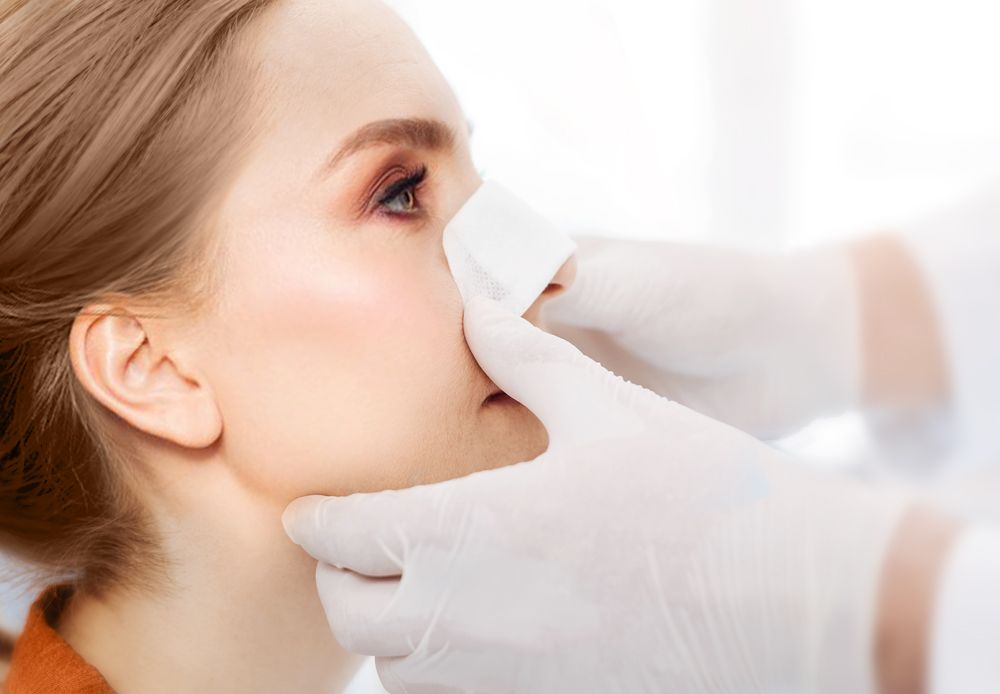Rhinoplasty

Rhinoplasty, the aesthetic procedure, but also a necessity in some cases, and one of the most requested operations.
ABOUT RHINOPLASTY
Being located in the center of the face, the nose is an important factor for a person's physiognomy. Its shape and size have a major impact on appearance. Apart from the aesthetic part, let's not forget that the nose is a part of the respiratory system, so its dysfunctions can lead to serious health problems. That is why people, since ancient times, have tried to perform interventions on the nose, changing its shape and size and also improving its functionality. The first rhinoplasties were performed in Ancient Egypt and India, and the principles of this operation were traced by the famous Indian surgeon Susruta, the father of plastic and repair surgery. A highly sought operation, rhinoplasty is a procedure that arouses a lot of curiosity from patients.
RHINOPLASTY CORRECTIONS
Rhinoplasty is aimed at reshaping the nose, regarding its appearance. If the person has a septal deviation, then this intervention can be associated with a septoplasty. Rhinoplasty and septoplasty can be performed at the same time, giving the satisfaction of a beautiful but also medically healthy nose.
Resize your nose according to your physiognomy.
Restoration of nasal symmetry.
Repair of nasal deviations.
Reduction or total elimination of snoring.
BENEFITS OF RHINOPLASTY
Rhinoplasty is sometimes a choice and sometimes a necessity.
Nasal respiration is physiological, as the air reaches the lungs filtered, heated and humidified - the essential features of healthy breathing. In the case of oral respiration we are not dealing with a change in the air, as it reaches the lungs without being cleaned.
Rhinoplasty is a variant if the patient wants a symmetrical, uniform nose, without deformities, a change in the tip of the nose or a reduction of the nose. At the same time, rhinoplasty is recommended to repair the effects of an accident, but also to improve breathing.
RHINOPLASTY INTERVENTION AND WHAT IT CONSISTS OF
Rhinoplasty is not a very complicated operation and one that requires too much preparation before surgery. The actual intervention lasts 2-4 hours, it is performed by the plastic surgeon, and beforehand medical investigations are made to certify the patient's health condition. There are several types of rhinoplasty surgery depending on the desired purpose, but also on the manner in which it is performed. Thus, a rhinoplasty can be:
Closed rhinoplasty: The procedure is performed under general anesthesia and consists of making 2 incisions inside of the nostrils. Through these incisions the doctor has access to the structure of the nose, thus modifying its shape and dimensions according to the patient's physiognomy.
Open rhinoplasty: compared to closed rhinoplasty, it also has an incision in the spine (the area that digs the nostrils). The skin is detached, the cartilage and bone are corrected, then the suture is performed. The doctor has a better visibility in this case on the structures of the nose. As for the incision in the columella, it heals so quickly that 3 months after the operation it is difficult to detect.
Secondary rhinoplasty: It is the operation that is performed after a first rhinoplasty whose results were not satisfactory.
RHİNOPLASTY OPERATING RISKS
● All operations are risky, but when performed by experienced plastic specialists, the risks are minor. The healing capacity of each patient is different, after surgery on the skin around the nasal pyramid may have small red dots due to the rupture of blood vessels. After surgery the scars are not visible. Risks associated with anesthesia.
● Postoperative infection. A slow and difficult healing.
POSTOPERATIVE RECOVERY
In the first few days after surgery, the patient may have edema or bruising on the lower eyelids that will persist for the first week. For two weeks patients are advised to avoid physical activities, and not wear glasses for 3 months after.